Please note that some of these case studies were also in our press packs, which can be found under the heading ‘Information’.
 John McGirl – Witness to an incident in 2023
John McGirl – Witness to an incident in 2023
Click here to view full case study
Fuel: Mains gas
Appliance: Cooker
Location: Kitchen of a rented family home
Notes by CO-Gas Safety: CO-Gas Safety were made aware of this incident via an article that appeared in Registered Gas Engineer magazine. We are grateful to the Gas Safe Register for making their members aware of incidents like these, which are all-too-common. On this occasion, Registered Gas Engineer John McGirl thankfully had the experience to recognise the signs of CO poisoning in a family he visited, and prevent an even more serious incident.
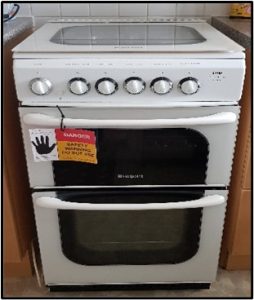 Rachel Brady – Survived in 2023
Rachel Brady – Survived in 2023
Click here to view full case study
Age: 47
Fuel: Mains gas
Appliance & Location: Cooker in her shared-ownership home
Notes by CO-Gas Safety: Rachel, a former paediatric nurse, contacted Stephanie Trotter of CO-Gas Safety after discovering the charity through research into symptoms she was concerned about. She has suffered a number of ongoing chronic symptoms for several years. This account tells how Registered Gas Engineers from Cadent, who run the Gas Emergency Service in her area, discovered that carbon monoxide was being emitted by her gas cooker, and how her medics responded when that was found.
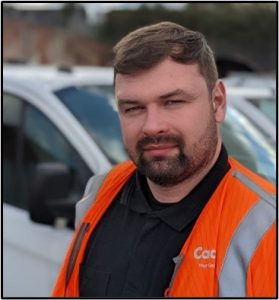 Dan Howard – Rescued survivors in 2021
Dan Howard – Rescued survivors in 2021
Click here to view full case study
Age: 30
Fuel: Mains gas
Appliance & Location: Central heating boilers in victims’ homes
Notes by CO-Gas Safety: Dan Howard is a gas engineer and a First Call Operative employed by Cadent, one of the four companies that make up the National Gas Emergency Service. As part of his job, he rescued two victims from carbon monoxide poisoning in separate incidents within 48 hours of each other. He has kindly shared his experience with us here.
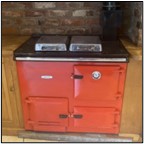
Anonymous couple – Survived in 2021
Click here to view full case study
Fuel: Mains gas
Appliance: Rayburn stove
Location: In the home they owned
Notes by CO-Gas Safety: When a couple returned home and suspected a gas problem, the Gas Emergency Service were called. They assessed the three gas appliances in the property and disconnected the gas supply without giving any indication which of them may have been at fault or leaving any alternative means of cooking or hot water provision.
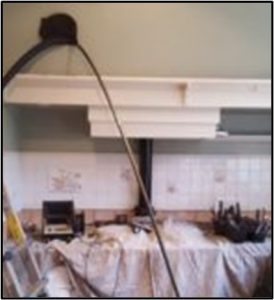 Richard Ashby – Survived in 2021
Richard Ashby – Survived in 2021
Click here to view full case study
Fuel: Oil
Appliance: AGA range cooker
Location: In the home he and his wife owned
Notes by CO-Gas Safety: CO-Gas Safety are grateful to the Guild of Master Chimney Sweeps for bringing this incident to their attention during CO Awareness week 2021. Mr Ashby and his wife had some knowledge of the dangers of carbon monoxide, so had installed a battery audio alarm near their oil-fired boiler several years previously. However, when it started to sound at night, their boiler was given the all-clear by a registered engineer and Mr Ashby luckily persisted with his investigations, calling his chimney sweep.
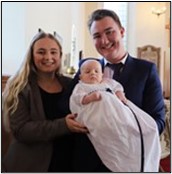
Amber Yates – Survived in 2021
Click here to view full case study
Ages: 24
Fuel: LPG cylinder (propane)
Appliance & Location: Fridge in privately-owned touring caravan
Notes by CO-Gas Safety: Amber and her husband, James, had this very close shave with CO in their own caravan when they went on holiday just a few hours from their home, with their newborn son. They had only replaced the battery in their caravan’s CO alarm the day before. CO-Gas Safety are very relieved that they knew what to do when the alarm then activated in the middle of the night.
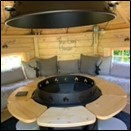 Tanya & Paul Garstang – Survived in 2020
Tanya & Paul Garstang – Survived in 2020
Click here to view full case study
Fuel: BBQ charcoal
Appliance: Brand new grill cabin
Location: In their own garden
Notes by CO-Gas Safety: Paul and Tanya contacted CO-Gas Safety to ask for help when they experienced elevated levels of CO inside their new BBQ hut. The building was marketed as a grill cabin and comes with a central BBQ grill for several people to sit around but soon became an obvious danger. CO-Gas Safety had difficulty finding an expert with the correct qualifications to carry out a legally admissible test in the hut. The Garstangs struggled to receive any useful response from either the retailer or the manufacturer regarding their concerns.

Naila Mansour – Survived in 2020
Click here to view full case study
Age: 35
Fuel: Mains gas
Appliance & Location: Central heating boiler in her rented home
Notes by CO-Gas Safety: In August 2020 Naila contacted Stephanie Trotter, President & Director of CO-Gas Safety. She had found the charity by searching online for any type of information for those unintentionally exposed to CO. Naila and her young family suffered a leak from their boiler while also confined by the 2020 Covid lockdown.

Colin the dog (& family) – Survived in 2020
Click here to view full case study
Fuel: Solid fuel
Appliance: Open fire
Location: In his owner’s home
Notes by CO-Gas Safety: The human family of Colin the dog are friends of CO-Gas Safety’s President & Director, Stephanie Trotter. As a result they were aware that CO is produced by all carbon-based fuels when they burn, not just mains gas, and have had carbon monoxide alarms fitted in their home that ensured this incident did not end in tragedy.
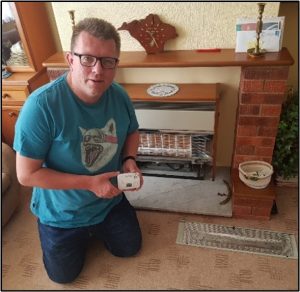
Norman & Yvonne Redstone – Survived in 2019
Click here to view full case study
Ages: 85 & 78
Fuel: Mains gas
Appliance & Location: Back boiler in their home
Notes by CO-Gas Safety: This case study is written by David Redstone, whose parents were alerted to excessive CO in their home by an alarm given by CO-Gas Safety. The position of this type of boiler, behind another fixed gas appliance, means that they very often do not receive full servicing and maintenance as often as is required. Chimneys and flues servicing these boilers are often not swept regularly, nor the boilers themselves given a thorough inspection or clean.
 Gill Wing – Survived in 2016
Gill Wing – Survived in 2016
Click here to view full case study
Age: 50
Fuel: Mains gas
Appliance & Location: Central heating boiler in her home
Notes by CO-Gas Safety: This private householder had her boiler serviced annually by Gas Safe registered engineers, but it was her neighbour’s carbon monoxide alarm that saved her from a potentially fatal fault in the design of her installation. In this case study she tells of the frustration she then experienced when accessing medical help.
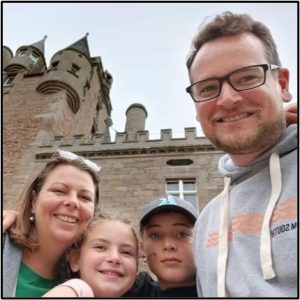 Kerry Potter – Survived in 2016
Kerry Potter – Survived in 2016
Click here to view full case study
Fuel: Mains gas
Appliance: Gas fire
Location: In the home she and her husband owned
Notes by CO-Gas Safety: Kerry has worked for SGN, the regional gas network provider for Scotland and the South of England, since 2020. In her role at SGN, as the Group Social Impact and Vulnerability lead, she works with organisations that safeguard our communities, working to ensure that all of us can live in a safe and warm home. It is in these meetings that she came to learn about CO-Gas Safety and the work we do to increase awareness. As a result, she kindly offered to share this case study with us, which took place before she joined SGN and gained knowledge of CO.
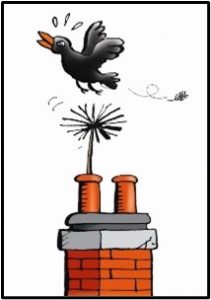 Gary Denley – Survived in 2016
Gary Denley – Survived in 2016
Click here to view full case study
Age: 59
Fuel: Wood
Appliance & Location: Self-installed woodburning stove at home
Notes by CO-Gas Safety: This case study was published in our 2018 press pack. The stove was installed to all the correct standards and caused no problems for the first season of use. It was only after a later modification to the chimney top that a CO alarm thankfully alerted this household to a potentially lethal problem.
 Rebecca Scarlett – Long-term exposure in 2014
Rebecca Scarlett – Long-term exposure in 2014
Click here to view full case study
Fuel: Mains gas
Appliance: Central heating boiler
Location: In the flat she owned
Notes by CO-Gas Safety: This case study was kindly written by Rebecca for our 2019 press pack. Her experience shows that few medical professionals think to test a patient for carbon monoxide poisoning when they present with symptoms. Over several months Rebecca had serious health issues and numerous tests, but none were for CO. Years after removing the source of the poison, Rebecca had increasing after-effects of exposure and became one of many survivors to benefit from the support and advice of CO-Gas Safety.
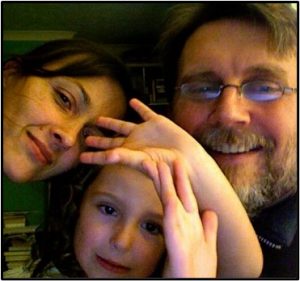 Tom Neal – Survived in 2014
Tom Neal – Survived in 2014
Click here to view full case study
Fuel: Mains gas
Appliance: Gas fire
Location: In the rented home he had lived in for almost 20 years
Notes by CO-Gas Safety: CO-Gas Safety was able to help Tom with information about gas safety and the legislation that applies to rental properties. He and his family had been suffering symptoms of carbon monoxide poisoning over several years and, when Stephanie Trotter’s help lead to his gas appliance being condemned, Tom was shocked at the lack of legal empowerment available in such circumstances.
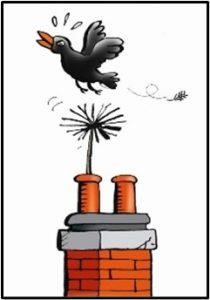 Anonymous mother & son – Survived 2011-2015
Anonymous mother & son – Survived 2011-2015
Click here to view full case study
Fuel: Solid fuel
Appliance: Professionally installed woodburning stove
Location: In the home this mother owned
Notes by CO-Gas Safety: This case study was published in our 2018 press pack. Despite being told the stove was fitted to HETAS standards and having the flue swept, faults in the installation of this stove repeatedly lead to this mother and son being poisoned. The final occasion could have been fatal. Navigating the legal system following this negligent installation was stressful, lengthy and ultimately insufficient, as is too often the case for victims of such dangerous tradesmen.
 John Courtney – Survived in 2010
John Courtney – Survived in 2010
Click here to view full case study
Age: 54
Fuel: Mains gas
Appliance & Location: Commercial hot water boiler in an office basement
Notes by CO-Gas Safety: John was an experienced Gas Emergency Service engineer (First Call Operative) working for Wales & West Utilities when he survived what could easily have been a fatal encounter with CO. The boiler he was called to look at had been wrongly adjusted the previous day by gas engineers who, although Gas Safe registered, were not certified for that appliance type. It is not widely realised that each Gas Safe Register identity card details the type of appliances that each engineer is qualified to work on.
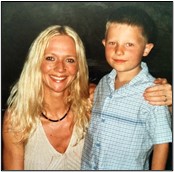 Sue Westwood – Long-term exposure in 2003-6
Sue Westwood – Long-term exposure in 2003-6
Click here to view full case study
Age: 33
Fuel: Mains gas
Appliance & Location: Central heating boiler in her new home
Notes by CO-Gas Safety: Sue has tried to raise awareness of unintentional CO poisoning through the press by recounting her experience of undiagnosed long-term symptoms. Despite two hospital stays and multiple GP visits for herself and her young son, the cause of her many debilitating conditions (including complete collapse) was discovered by chance during a routine boiler check.
 John & Irma O’Leary – Long-term exposure in 2003-4
John & Irma O’Leary – Long-term exposure in 2003-4
Click here to view full case study
Fuel: Mains gas
Appliance: Central heating boiler
Location: Their rented home managed by a TMO (tenant management organisation)
Notes by CO-Gas Safety: John O’Leary and his family suffered long-term low-level exposure to CO and other toxins over a period of time in 2003-4. CO-Gas Safety were able to help them by recommending a good lawyer and thankfully their case was successful. John, who is a writer and artist, has helped the charity hugely by illustrating for us several times. Irma has very kindly become a trustee. We are grateful to them for allowing us to recount their experience with both their landlord and the medical profession.
 Ann Daniels – Survived in 2002
Ann Daniels – Survived in 2002
Click here to view full case study
Age: 37
Fuel: ‘White gas’, a type of LPG (Liquefied Petroleum Gas)
Appliance & Location: Portable cooker in a tent on an expedition to the North Pole
Notes by CO-Gas Safety: Ann Daniels is a World Record-breaking polar explorer. She has completed over 14 polar expeditions. In 2002 she put together the first all-woman team to ski continually from land to the North Geographic Pole. Having heard about a near-fatal exposure to carbon monoxide that Ann and her team had on that epic expedition, despite their good knowledge of the dangers of CO, CO-Gas Safety asked her to write this case study and we are immensely grateful to her for doing so.
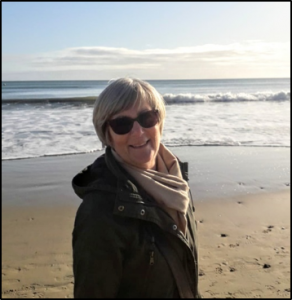 Janet Blount – Survived in 1999
Janet Blount – Survived in 1999
Click here to view full case study
Age: 43
Fuel: Mains gas
Appliance & Location: Boiler in her work office
Notes by CO-Gas Safety: This case study is written by Janet and shows that exposure can easily go unnoticed on a daily basis. CO poisoning can also have delayed and serious ongoing symptoms. Janet’s colleagues, though annoyed at the inconvenience that her complaints caused at the time, are lucky that she persisted in identifying the boiler as an immediate danger.
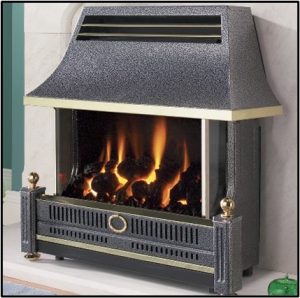 Anonymous family – Survived in 1989
Anonymous family – Survived in 1989
Click here to view full case study
Fuel: Mains gas
Appliance: Gas fire
Location: In living room of the family home provided by their employer
Notes by CO-Gas Safety: This gentleman contacted CO-Gas Safety in 2023, over thirty years after the exposure that hospitalised his wife, who was pregnant at the time. As he was living in a newly-built house that came with his job, he feels there were failings from the builder, his accommodation provider, the gas engineers who checked the appliances and also the medics who oversaw his wife’s emergency and maternity care; failings which may still be having repercussions to this day.
 Sandra Smith – Long-term exposure in 1986
Sandra Smith – Long-term exposure in 1986
Click here to view full case study
Age: Exposure at 43, symptoms ongoing for decades
Fuel: Mains gas
Appliance & Location: Central heating boiler & fire in her home
Notes by CO-Gas Safety: Sandra Smith, Carbon Monoxide Support, Barnsley, first contacted Stephanie Trotter around 20 years ago to tell Stephanie about her poisoning. She had been doing what she could to survive and to raise awareness ever since, despite her poor health. Stephanie is very grateful to this survivor for all her support to the work of CO-Gas Safety and also to Stephanie over the years. Sadly, Sandra has recently passed away and her husband has helped us to conclude this case study, initially written by Sandra herself.
 Tony Dymott – Survived in 1976
Tony Dymott – Survived in 1976
Click here to view full case study
Age: 23
Fuel: Petrol
Appliance & Location: Police van used at work
Notes by CO-Gas Safety: This incident would most likely not happen today, due to changes in vehicle technology and Police working practices, but it shows the danger posed by petrol exhaust emissions, even when not in an enclosed space.



